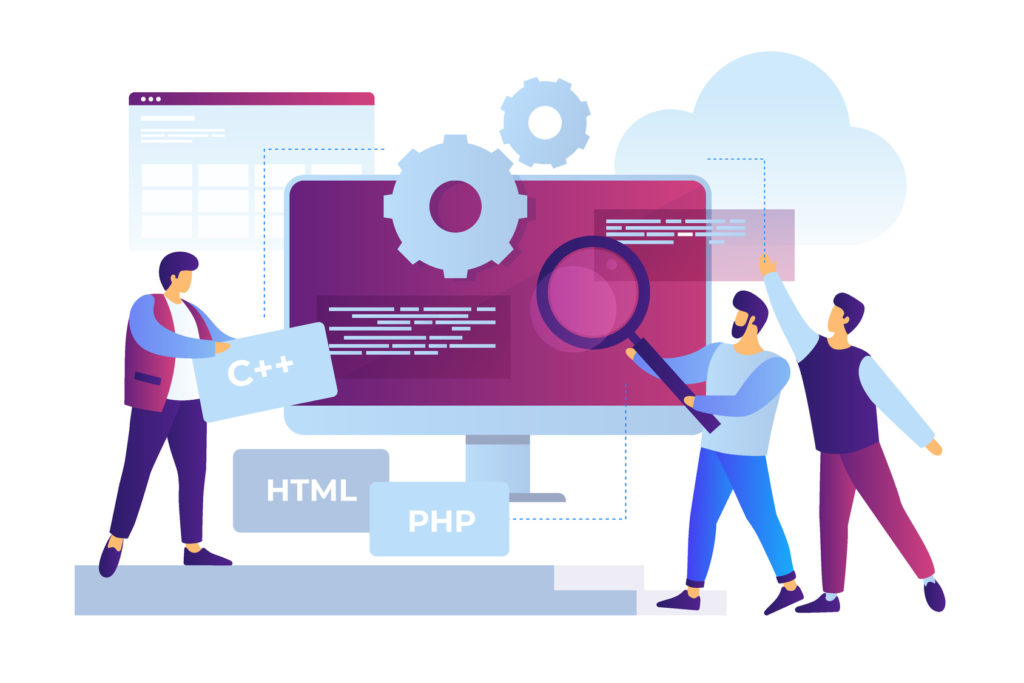Table of Contents
The entitled query is a fantastic inquisition for entrepreneurs and employees alike. The field of marketing has transformed drastically since the introduction of the worldwide TCP/IP network we have come to know as the “Internet.” Instantaneous data sharing across global platforms allow individuals (and companies) to express and transmit ideas as fast as human fingers can compile them into a connected device. However, the rapid advancement of computing applications can prove to be difficult to navigate to the untrained individual. Programs rely on a framework of coding and specialized data to most efficiently execute their given task. This is where API comes into play, by effectively acting as a middleman between different programs.
What Is an API?
API stands for Application Programming Interface, which essentially refers to the transference of communication between applications. API is not a server, nor a database but rather an entry point into the database which then returns information to the user. If API were to be exemplified by an everyday situation, it would be as follows: In a restaurant, the user would be the customer sitting down at the table. The database would be the kitchen, where all the desired food is prepared and held until it is needed to be retrieved. The API, in this case, would be the waiter who enters the kitchen (database) and returns with the desired food (data) that the customer (user) requested.
 API’s in Marketing/Business
API’s in Marketing/Business
Now that we have established a basic understanding of how API works, let’s begin to dissect and answer the initial inquiry “What Is an API and How Can It Help Your Company?” We’ll begin by focusing on the concept of Marketing API. API’s are designed so that services can be rerouted to consume data from third-party providers. In the case of a travel-based website like Kayak.com, users are able to select, input and request information on flights, hotels, etc, for specified dates and locations. API allows the results of these queries to be pulled from several different travel service databases and assimilated right on their website so that users can compare rates from a multitude of providers within a singular platform. By drawing an influx of web traffic and users to their platform, Kayak is able to make money through their referrals to the airline, car rental, and hotel companies whose data (rates), they collect and present to users. However, more than half of their revenue is generated through advertising within their site.
 How Can an API Help Your Company?
How Can an API Help Your Company?
Now, we will discuss why API marketing is so important for your business. API developers can assist in transforming raw data into key insights by integrating systems and data in the stack of marketing technology. An effective API integration into a given system can streamline a business owners’ work by automating tasks that traditionally have had to be performed manually, saving both time and labor. In order to be most impactful and effective, marketers need to develop a mastery of consumer insights and technological strategy, so that data can be best utilized to improve customer experiences.
Whether your given audiences are on the computer, mobile, social, or otherwise, marketers will need to be strategic about collecting data across multiple channels. Data is moving increasingly fast through enormous streams across different channels. Advertising API’s allow multiple applications to communicate with each other and organize raw data which in turn allows a business owner to make sense of it which translates to gaining better insights.
By utilizing data from multiple sources, marketers can better target niche audiences. It is essential that a company delivers a highly personalized experience (via these insights) for a niche audience. Relatable and relevant content is the foundation for building a base of loyal consumers. The purchasing of digital media buying (ex: pay-per-click) is reliant on the collection and analysis of data. To be successful and capitalize on emerging trends, marketers must continuously adjust and optimize across multiple channels at scale.
 The Next Step for Business Owners
The Next Step for Business Owners
Now that we have learned about API, its marketing application and its importance to YOUR business, what’s next? Focus on what processes you aim to utilize an API integration for, and by what result you hope to gain as a result. There are a total of 18,000 API’s available on the market today, with just over 500 of those being advertisement based. Listed below are five key API’s to utilize for marketing in the age of social media and digital marketing:
- Google Analytics API’s: Automate complex reporting, saving countless hours of time and labor. This API even allows for the creation of custom reports by specific measures and metrics by utilizing the Core Reporting API. The Multi-Channel Funnels Reporting API allows access to conversion rate and attribution data on your website. The Embed API even allows for a fully customized dashboard with your given brand on a third party site.
- FullContact Developer API’s: By pulling social profiles of customers inside your customer relationship management (CRM), these API’s can help to enhance contact profiles. Features include options to filter through demographics as well as more enriched information about potential consumers to create highly personalized marketing campaigns.
- Facebook Audience Management API’s: Facebook ads succeed based upon exposure to the right audience at the right moment. This requires precision and strategy which Facebook simplifies for you using this API. By utilizing your CRM system’s data, website visitors or mobile IDs, you have the ability to contact your preferred Facebook users. Additionally, you can explore similar audiences who share key characteristics with existing customer’s. Everything in the API is tracked and reported based on the success of placement and direct conversion activity such as registrations and purchases.
- Google AdWords API: The Google AdWords API allows developers to build applications that interact directly with the AdWords platform in order to manage accounts from the level of customer down to the keyword. This API greatly increases the efficiency of managing large-scale or complicated AdWords accounts and campaigns.
- MailChimp API: The MailChimp marketing API synchronizes your email campaigns with your respective CRM and assists in pulling campaign statistics while testing different calls and endpoints before transitioning to production.
 NeoReach also offers an API solution for every use case. We power and enrich enterprise applications with better social insights. Get started with us to find out more!
NeoReach also offers an API solution for every use case. We power and enrich enterprise applications with better social insights. Get started with us to find out more!
This article was written by Evan Schimek.





 API’s in Marketing/Business
API’s in Marketing/Business How Can an API Help Your Company?
How Can an API Help Your Company? The Next Step for Business Owners
The Next Step for Business Owners NeoReach also offers an
NeoReach also offers an 

















